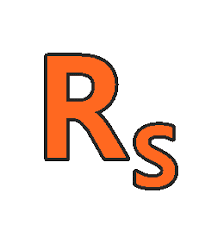About Course
Introduction to Chemical Thermodynamics & Kinetics
Classical thermodynamics and kinetics will be covered in this course, which was designed to describe a range of macroscopic Physico-chemical processes with applications in Chemistry. The lectures will be set at the level of undergraduates, and the course is designed as an entry-level course to the broad topic of thermodynamics and kinetics.
Chemical Thermodynamics Course layout
Week 1: Review of states of matter, ideal and real gas equations, and heat capacities under constant volume and pressure. Thermodynamics: An Introduction, The Zeroth Law of Thermodynamics
Week 2: The Fundamental Law, Work, and heat are two concepts that come to mind. Reversible and irreversible techniques are used to complete the work.
Week 3: Thermochemistry, enthalpy, Joule’s experiment, and Joule-Thompson experiment
Week 4: Second law, entropy concept, Carnot cycle, Clausius inequality, maximum work concept
Week 5: Gibbs and Helmholtz free energies, Maxwell’s relations, Chemical potential, Gibbs-Helmholtz equation, Gibbs-Duhem equation, Gibbs-Helmholtz equation
Week 6: Phase equilibrium, the Clapeyron equation and the Clausius-Clapeyron equation, the phase rule, and phase diagrams for one and two-component systems.
Week 7: Mixtures’ thermodynamics, partial molar characteristics, ideal, ideal-dilute, and real solutions, colligative properties
Week 8: Chemical equilibrium, the equilibrium constant, the van Hoff equation, and the Le Chatelier principle
Week 9: Equilibrium electrochemistry, electrochemical cell types, standard electrode potential, Nernst equation, and liquid junction potential
Week 10: Chemical kinetics, rate laws for elementary reactions of various orders, and competing reactions.
Week 11: Composite reaction mechanisms, steady-state and rate-determining step approximations, homogeneous (acid-base and enzyme catalysis), and heterogeneous catalysis (Langmuir adsorption isotherm)
Week 12: The rate constant’s temperature dependency, Introduction to the dynamics of chemical reactions in the gas phase, The Maxwell-Boltzman molecular speed distribution and its use in collision theory Reactions using only one molecule.
Join to Introduction to Chemical Thermodynamics & Kinetics course
Course Content
Phase equilibrium_Part 4
-
Phase equilibrium_Part 5
00:00 -
Phase equilibrium – Part 6
00:00 -
Phase equilibrium – Part 7
00:00 -
Mixtures – Part 3
00:00 -
Mixtures – Part 4
00:00 -
Mixtures – Part 5
00:00 -
Chemical equilibrium – Part 2B
00:00 -
Chemical equilibrium_Part 2C
00:00 -
Electrochemistry – Part 2
00:00 -
Electrochemistry – Part 3
00:00
Student Ratings & Reviews

